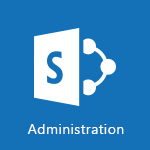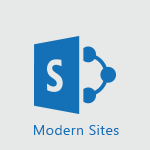SharePoint (Classic Sites) - Recovering deleted items (Recycle bin and Second-stage recycle bin) Tutorial
In this video, you will learn about recovering deleted items using the Recycle Bin and Second-stage Recycle Bin in SharePoint.
The video covers how to access the Recycle Bin on both SharePoint communication sites and SharePoint team sites, as well as the necessary permissions required.
It demonstrates how to restore a document from the Recycle Bin and explains that if the document was contained in a deleted folder, SharePoint will automatically recreate it.
The video also mentions the option to remove a document from the Recycle Bin, which sends it to the Second-stage Recycle Bin.
It emphasizes the importance of visiting the Second-stage Recycle Bin if a document cannot be found in the main Recycle Bin.
However, it warns that if a document is deleted from the Second-stage Recycle Bin, it will be permanently deleted and cannot be restored after 93 days.
This knowledge will help you effectively recover deleted items in SharePoint and avoid permanent deletion.
- 2:18
- 4890 views
-
SharePoint (Classic Sites) - Creating a permission group
- 3:53
- Viewed 2738 times
-
SharePoint (Classic Sites) - Creating a personalized permission level
- 2:46
- Viewed 2921 times
-
SharePoint (Classic Sites) - Restoring an earlier version of your document
- 1:50
- Viewed 3047 times
-
SharePoint (Classic Sites) - Granting access to the SharePoint site to someone outside the company
- 3:46
- Viewed 3218 times
-
SharePoint (Classic Sites) - Sharing a folder or document with someone outside the company
- 3:44
- Viewed 2921 times
-
SharePoint (Classic Sites) - Targeting content using a specific audience
- 3:35
- Viewed 2935 times
-
SharePoint (Classic Sites) - Restricting a document to read-only mode (Extract a document)
- 2:05
- Viewed 2832 times
-
SharePoint (Classic Sites) - Checking the granted shares
- 2:27
- Viewed 2877 times
-
Protect a document shared by password
- 1:41
- Viewed 9587 times
-
How do I prevent the transfer of an email?
- 2:07
- Viewed 8724 times
-
How do I block a sender?
- 1:01
- Viewed 3822 times
-
How do I share a document securely with Outlook?
- 1:49
- Viewed 3549 times
-
Create and manage team channel
- 1:51
- Viewed 3399 times
-
Do I share with OneDrive, SharePoint, or TEAMS?
- 2:24
- Viewed 3342 times
-
Manage permissions
- 1:10
- Viewed 3255 times
-
Restrict a folder/document to certain members of your team
- 1:49
- Viewed 3231 times
-
Granting access to the SharePoint site to someone outside the company
- 3:46
- Viewed 3218 times
-
Restrict a document to reading only
- 1:03
- Viewed 3215 times
-
How do I recognize a fraudulent email?
- 2:01
- Viewed 3054 times
-
Restoring an earlier version of your document
- 1:50
- Viewed 3047 times
-
Targeting content using a specific audience
- 3:35
- Viewed 2935 times
-
Sharing a folder or document with someone outside the company
- 3:44
- Viewed 2921 times
-
Creating a personalized permission level
- 2:46
- Viewed 2921 times
-
Checking the granted shares
- 2:27
- Viewed 2877 times
-
Understanding the different types and roles of team sites in SharePoint
- 3:05
- Viewed 2876 times
-
Restricting a document to read-only mode (Extract a document)
- 2:05
- Viewed 2832 times
-
How to protect an email by encryption?
- 2:41
- Viewed 2784 times
-
Creating a permission group
- 3:53
- Viewed 2738 times
-
Ensure data security during a Teams meeting
- 1:48
- Viewed 2652 times
-
General security practices in Outlook
- 1:03
- Viewed 2623 times
-
Manage permissions
- 1:03
- Viewed 1643 times
-
Understand and Secure Information Sharing in Instant Messaging
- 2:38
- Viewed 1047 times
-
Manage Privacy in Private Channels
- 2:34
- Viewed 839 times
-
Restrict a Document to Certain Team Members
- 1:50
- Viewed 831 times
-
Secure Teams Upon Creation
- 2:57
- Viewed 808 times
-
Secure a Shared Document with a Password
- 1:28
- Viewed 796 times
-
Restrict a Document to Read-Only
- 0:58
- Viewed 793 times
-
Check Granted Shares
- 00:48
- Viewed 449 times
-
Modify Sharing Rules
- 00:53
- Viewed 384 times
-
Protect My Document with a Password and Expiration Date
- 01:02
- Viewed 382 times
-
Recover deleted items
- 01:09
- Viewed 380 times
-
Best Security Practices on OneDrive
- 01:27
- Viewed 368 times
-
Restore Your OneDrive Space
- 01:42
- Viewed 356 times
-
Avoid Abusive Document Sharing
- 00:57
- Viewed 339 times
-
Block a sender
- 01:54
- Viewed 297 times
-
Recall or replace an e-mail message
- 01:45
- Viewed 255 times
-
Prevent the forwarding of an email
- 01:01
- Viewed 220 times
-
Prevent transfer for a meeting
- 01:19
- Viewed 219 times
-
Share a document securely with Outlook
- 02:21
- Viewed 219 times
-
Protect an email by encrypting
- 01:10
- Viewed 217 times
-
Identify a fraudulent email
- 02:06
- Viewed 217 times
-
Provide an overview of best security practices in Outlook
- 01:08
- Viewed 199 times
-
Guide to Using the Microsoft Authenticator App
- 01:47
- Viewed 196 times
-
Concept of Multi-Factor Authentication
- 01:51
- Viewed 187 times
-
Turn on Multi-Factor Authentication in the Admin Section
- 02:07
- Viewed 154 times
-
Manual Activation of Multi-Factor Authentication
- 01:40
- Viewed 111 times
-
Initiate a project budget tracking table with Copilot
- 02:54
- Viewed 60 times
-
Develop and share a clear project follow-up with Copilot
- 02:18
- Viewed 64 times
-
Organize an action plan with Copilot and Microsoft Planner
- 01:31
- Viewed 79 times
-
Structure and optimize team collaboration with Copilot
- 02:28
- Viewed 75 times
-
Copilot at the service of project reports
- 02:36
- Viewed 66 times
-
Initiate a tracking table with ChatGPT
- 01:35
- Viewed 63 times
-
Distribute tasks within a team with ChatGPT
- 01:26
- Viewed 105 times
-
Generate a meeting summary with ChatGPT
- 01:24
- Viewed 68 times
-
Project mode
- 01:31
- Viewed 70 times
-
Create an agent for a team
- 01:53
- Viewed 119 times
-
Install and access Copilot Studio in Teams
- 01:38
- Viewed 120 times
-
Analyze the Copilot Studio agent
- 01:25
- Viewed 67 times
-
Publish the agent and make it accessible
- 01:39
- Viewed 120 times
-
Copilot Studio agent settings
- 01:33
- Viewed 63 times
-
Add new actions
- 01:54
- Viewed 117 times
-
Create a first action
- 01:59
- Viewed 115 times
-
Manage topics
- 01:51
- Viewed 94 times
-
Manage knowledge sources
- 01:11
- Viewed 64 times
-
Create an agent with Copilot Studio
- 01:52
- Viewed 111 times
-
Access Copilot Studio
- 01:09
- Viewed 111 times
-
Get started with Copilot Studio
- 01:25
- Viewed 62 times
-
Introduction to PowerBI
- 00:60
- Viewed 181 times
-
Introduction to Microsoft Outlook
- 01:09
- Viewed 171 times
-
Introduction to Microsoft Insights
- 02:04
- Viewed 173 times
-
Introduction to Microsoft Viva
- 01:22
- Viewed 177 times
-
Introduction to Planner
- 00:56
- Viewed 185 times
-
Introduction to Microsoft Visio
- 02:07
- Viewed 173 times
-
Introduction to Microsoft Forms
- 00:52
- Viewed 181 times
-
Introducing to Microsoft Designer
- 00:28
- Viewed 246 times
-
Introduction to Sway
- 01:53
- Viewed 156 times
-
Introducing to Word
- 01:00
- Viewed 176 times
-
Introducing to SharePoint Premium
- 00:47
- Viewed 158 times
-
Create a call group
- 01:15
- Viewed 223 times
-
Use call delegation
- 01:07
- Viewed 142 times
-
Assign a delegate for your calls
- 01:08
- Viewed 217 times
-
Ring multiple devices simultaneously
- 01:36
- Viewed 145 times
-
Use the "Do Not Disturb" function for calls
- 01:28
- Viewed 136 times
-
Manage advanced call notifications
- 01:29
- Viewed 152 times
-
Configure audio settings for better sound quality
- 02:08
- Viewed 183 times
-
Block unwanted calls
- 01:24
- Viewed 149 times
-
Disable all call forwarding
- 01:09
- Viewed 155 times
-
Manage a call group in Teams
- 02:01
- Viewed 144 times
-
Update voicemail forwarding settings
- 01:21
- Viewed 141 times
-
Configure call forwarding to internal numbers
- 01:02
- Viewed 136 times
-
Set call forwarding to external numbers
- 01:03
- Viewed 158 times
-
Manage voicemail messages
- 01:55
- Viewed 206 times
-
Access voicemail via mobile and PC
- 02:03
- Viewed 224 times
-
Customize your voicemail greeting
- 02:17
- Viewed 134 times
-
Transfer calls with or without an announcement
- 01:38
- Viewed 134 times
-
Manage simultaneous calls
- 01:52
- Viewed 144 times
-
Support third-party apps during calls
- 01:53
- Viewed 177 times
-
Add participants quickly and securely
- 01:37
- Viewed 141 times
-
Configure call privacy and security settings
- 02:51
- Viewed 139 times
-
Manage calls on hold
- 01:20
- Viewed 148 times
-
Live transcription and generate summaries via AI
- 03:43
- Viewed 137 times
-
Use the interface to make and receive calls
- 01:21
- Viewed 148 times
-
Draft a Service Memo
- 02:33
- Viewed 194 times
-
Extract Invoice Data and Generate a Pivot Table
- 03:26
- Viewed 181 times
-
Formulate a Request for Pricing Conditions via Email
- 02:32
- Viewed 267 times
-
Analyze a Supply Catalog Based on Needs and Budget
- 02:41
- Viewed 235 times
-
SharePoint Page Co-Editing: Collaborate in Real Time
- 02:14
- Viewed 93 times
-
Other Coaches
- 01:45
- Viewed 194 times
-
Agents in SharePoint
- 02:44
- Viewed 157 times
-
Prompt coach
- 02:49
- Viewed 180 times
-
Modify, Share, and Install an Agent
- 01:43
- Viewed 171 times
-
Configure a Copilot Agent
- 02:39
- Viewed 166 times
-
Describe a copilot agent
- 01:32
- Viewed 190 times
-
Rewrite with Copilot
- 01:21
- Viewed 163 times
-
Analyze a video
- 01:21
- Viewed 189 times
-
Use the Copilot pane
- 01:12
- Viewed 181 times
-
Process text
- 01:03
- Viewed 169 times
-
Create an insights grid
- 01:19
- Viewed 284 times
-
Generate and manipulate an image in PowerPoint
- 01:47
- Viewed 178 times
-
Interact with a web page with Copilot
- 00:36
- Viewed 199 times
-
Create an image with Copilot
- 00:42
- Viewed 295 times
-
Summarize a PDF with Copilot
- 00:41
- Viewed 193 times
-
Analyze your documents with Copilot
- 01:15
- Viewed 191 times
-
Chat with Copilot
- 00:50
- Viewed 178 times
-
Particularities of Personal and Professional Copilot Accounts
- 00:40
- Viewed 273 times
-
Data Privacy in Copilot
- 00:43
- Viewed 193 times
-
Access Copilot
- 00:25
- Viewed 297 times
-
Use a Copilot Agent
- 01:24
- Viewed 202 times
-
Modify with Pages
- 01:20
- Viewed 206 times
-
Generate and manipulate an image in Word
- 01:19
- Viewed 198 times
-
Create Outlook rules with Copilot
- 01:12
- Viewed 192 times
-
Generate the email for the recipient
- 00:44
- Viewed 184 times
-
Action Function
- 04:18
- Viewed 149 times
-
Search Function
- 03:42
- Viewed 201 times
-
Date and Time Function
- 02:53
- Viewed 182 times
-
Logical Function
- 03:14
- Viewed 275 times
-
Text Function
- 03:25
- Viewed 210 times
-
Basic Function
- 02:35
- Viewed 174 times
-
Categories of Functions in Power FX
- 01:51
- Viewed 199 times
-
Introduction to Power Fx
- 01:09
- Viewed 176 times
-
The New Calendar
- 03:14
- Viewed 298 times
-
Sections
- 02:34
- Viewed 183 times
-
Customizing Views
- 03:25
- Viewed 179 times
-
Introduction to the New Features of Microsoft Teams
- 00:47
- Viewed 296 times
-
Guide to Using the Microsoft Authenticator App
- 01:47
- Viewed 196 times
-
Turn on Multi-Factor Authentication in the Admin Section
- 02:07
- Viewed 154 times
-
Manual Activation of Multi-Factor Authentication
- 01:40
- Viewed 111 times
-
Concept of Multi-Factor Authentication
- 01:51
- Viewed 187 times
-
Use the narrative Builder
- 01:31
- Viewed 234 times
-
Microsoft Copilot Academy
- 00:42
- Viewed 193 times
-
Connect Copilot to a third party app
- 01:11
- Viewed 204 times
-
Share a document with copilot
- 00:36
- Viewed 192 times
-
Configurate a page with copilot
- 01:47
- Viewed 194 times
-
Use Copilot with Right-Click
- 01:45
- Viewed 959 times
-
Draft a Service Memo with Copilot
- 02:21
- Viewed 207 times
-
Extract Invoice Data and Generate a Pivot Table
- 02:34
- Viewed 235 times
-
Summarize Discussions and Schedule a Meeting Slot
- 02:25
- Viewed 298 times
-
Formulate a Request for Pricing Conditions via Email
- 02:20
- Viewed 368 times
-
Analyze a Supply Catalog Based on Needs and Budget
- 02:52
- Viewed 349 times
Objectifs :
This document aims to provide a comprehensive guide on how to retrieve deleted documents from SharePoint's Recycle Bin, including the steps to restore documents and the importance of permissions.
Chapitres :
-
Introduction to SharePoint Recycle Bin
SharePoint provides a Recycle Bin feature that allows users to recover mistakenly deleted documents. Understanding how to navigate this feature is essential for effective document management within SharePoint sites. -
Accessing the Recycle Bin
To retrieve deleted documents, you first need to access the Recycle Bin. The process varies slightly depending on the type of SharePoint site you are using: - **SharePoint Communications Site**: Navigate to the content of your site and open the Recycle Bin. - **SharePoint Team Site**: Access the Recycle Bin through the site tabs. Both types of sites have a primary Recycle Bin and a second-stage Recycle Bin, which functions similarly. -
Permissions and Access Issues
To access the Recycle Bin, you must have the necessary permissions granted by the site administrator or owner. If you cannot see the Recycle Bin, it may be due to insufficient permissions or the Recycle Bin feature being deactivated. -
Restoring Documents
To restore a document from the Recycle Bin, follow these steps: 1. Select the document you wish to restore. 2. Click on the 'Restore' option. The document will be restored to its original location. If the document was in a folder that was also deleted, SharePoint will recreate that folder, but only the restored documents will be placed inside it. -
Managing Deleted Documents
You can also permanently delete documents from the Recycle Bin, which will send them to the second-stage Recycle Bin. If you cannot find a document in the main Recycle Bin, check the second-stage Recycle Bin as it serves as a safety net for documents deleted twice by mistake. However, be cautious: if you delete a document from the second-stage Recycle Bin, it will be permanently removed and cannot be restored. -
Retention Period for Deleted Documents
Documents in both the main and secondary Recycle Bins are automatically deleted after 93 days from the time of deletion. It is crucial to act promptly if you need to recover a document within this timeframe. -
Conclusion
Understanding how to effectively use the Recycle Bin in SharePoint is vital for document recovery. By following the outlined steps and being aware of permissions and retention policies, users can manage their documents more efficiently and minimize the risk of permanent loss.
FAQ :
How can I retrieve a deleted document in SharePoint?
You can retrieve a deleted document from the Recycle Bin in your SharePoint site. If you are on a communications site, go to the content of your site and open the Recycle Bin. For a team site, access the Recycle Bin from your site tabs. Select the document you want to restore and click 'Restore' to recover it.
What is the difference between the main Recycle Bin and the second stage Recycle Bin?
The main Recycle Bin holds documents that have been deleted from the SharePoint site, while the second stage Recycle Bin contains documents that have been deleted from the main Recycle Bin. The second stage serves as a backup for recovering documents that were deleted twice.
What should I do if I cannot find my document in the Recycle Bin?
If you cannot find your document in the main Recycle Bin, check the second stage Recycle Bin. If it is not there, it may have been permanently deleted, especially if it has been more than 93 days since deletion.
Do I need special permissions to access the Recycle Bin?
Yes, you need the necessary permissions granted by the site administrator or owner to access the Recycle Bin. If you do not see it, you may not have the required permissions or the Recycle Bin may be deactivated.
What happens if I delete a document from the second stage Recycle Bin?
If you delete a document from the second stage Recycle Bin, it will be permanently deleted and cannot be restored. Be cautious when deleting from this bin.
Quelques cas d'usages :
Recovering Important Documents
In a corporate environment, employees often accidentally delete important documents. By utilizing the Recycle Bin and second stage Recycle Bin in SharePoint, employees can quickly recover these documents, ensuring that critical information is not lost and productivity is maintained.
Managing Document Permissions
Site administrators can manage permissions to ensure that only authorized users can access the Recycle Bin. This helps prevent unauthorized recovery of sensitive documents and maintains data security within the organization.
Training New Employees
During onboarding, new employees can be trained on how to use the Recycle Bin in SharePoint. This knowledge helps them understand document management and recovery processes, reducing the risk of permanent data loss.
Document Lifecycle Management
Organizations can implement a document lifecycle management strategy that includes regular checks of the Recycle Bin. This ensures that documents are properly managed and that any accidental deletions can be addressed promptly.
Data Recovery Planning
In case of accidental mass deletions, having a plan that includes the use of the second stage Recycle Bin can be crucial. Organizations can prepare for potential data loss scenarios and ensure that they have a recovery strategy in place.
Glossaire :
SharePoint
A web-based collaboration platform developed by Microsoft that integrates with Microsoft Office. It is used for storing, organizing, sharing, and accessing information from any device.
Recycle Bin
A storage area in SharePoint where deleted documents are temporarily held before permanent deletion. Users can restore documents from the Recycle Bin if they are deleted by mistake.
Second Stage Recycle Bin
An additional layer of the Recycle Bin in SharePoint that holds documents that have been deleted from the main Recycle Bin. It serves as a safety net for recovering documents that were deleted twice.
Permissions
Settings that determine what actions users can perform on SharePoint sites, such as viewing, editing, or deleting content. Permissions are managed by site administrators.
Administrator
A user with elevated permissions who manages the SharePoint site, including user access and site settings.
Restore
The action of recovering a deleted document from the Recycle Bin back to its original location in SharePoint.
Permanent Deletion
The final removal of a document from SharePoint, making it impossible to recover. This occurs after documents are deleted from both the main and second stage Recycle Bins.




